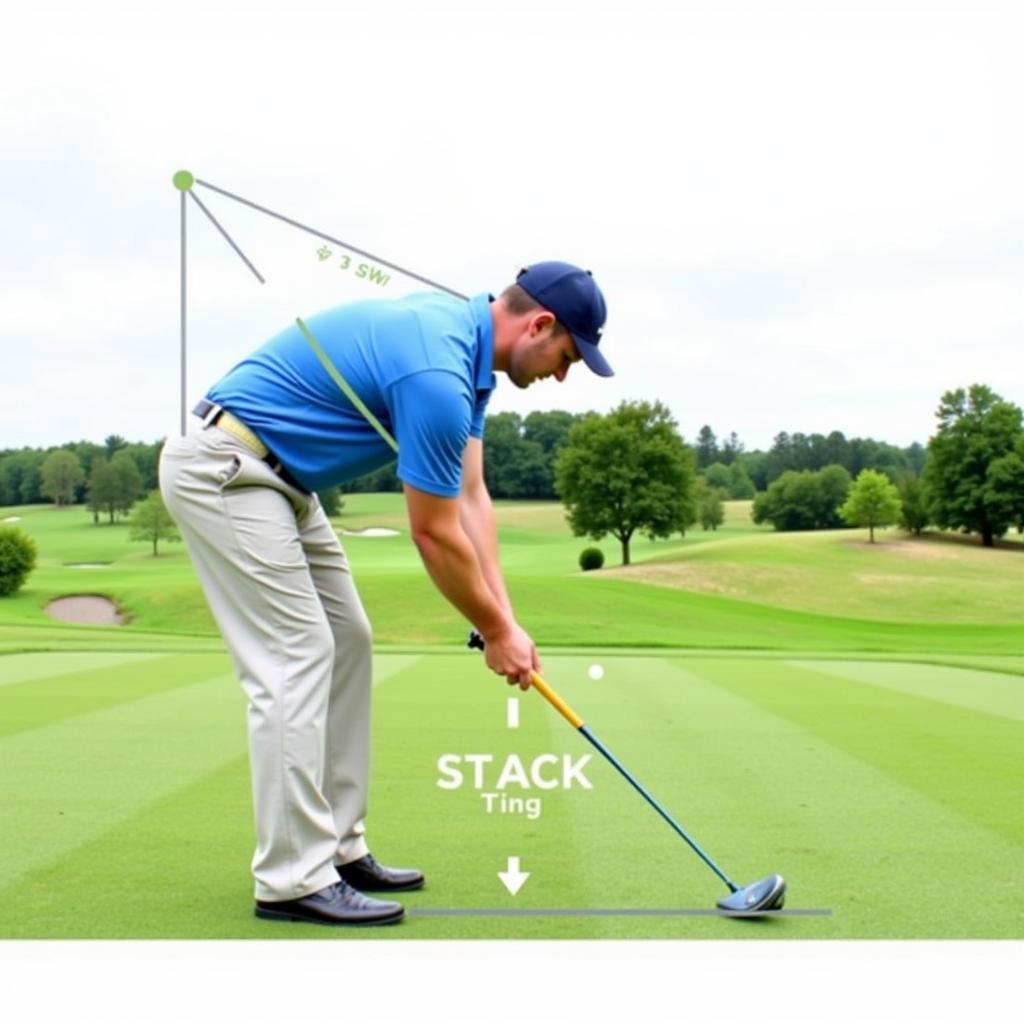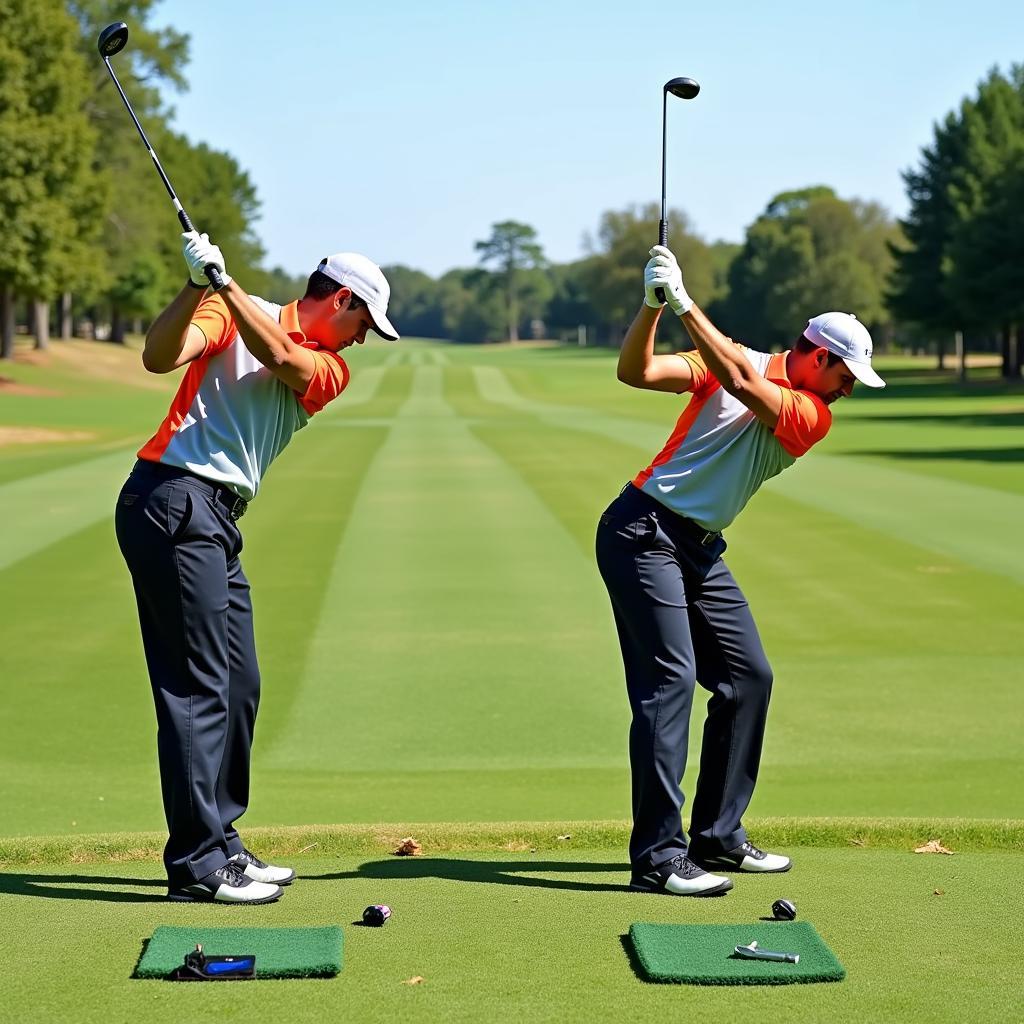Understanding the Different Types Of Golf Swings is crucial for improving your game. Whether you’re a beginner or a seasoned pro, refining your swing can significantly impact your distance, accuracy, and overall performance on the course. This article will explore various golf swing types, helping you identify the best approach for your skill level and playing style. See our guide on golf swing types.
Understanding the Basics of a Golf Swing
Before diving into the different types, let’s establish the fundamental components of a golf swing. Every swing, regardless of its variation, involves a backswing, downswing, impact, and follow-through. The backswing sets the stage, the downswing generates power, the impact transfers energy to the ball, and the follow-through completes the motion.
Exploring Different Types of Golf Swings
There are several recognized golf swing types, each with its own nuances and advantages. Let’s delve into some of the most common ones:
The Traditional or Classic Golf Swing
This is the swing most commonly taught to beginners. It emphasizes a smooth, controlled motion with a full backswing and follow-through. The classic swing focuses on maintaining balance and tempo throughout the swing.
The Modern Golf Swing
The modern golf swing often incorporates more athletic movements and a wider swing arc, aiming for increased power and distance. This style places a premium on generating clubhead speed.
The Stack and Tilt Golf Swing
This swing prioritizes maintaining a consistent spine angle throughout the swing, emphasizing a “stacking” motion during the backswing and a “tilting” motion during the downswing. This approach helps to improve ball striking and consistency. What are the best bump tees to use?
 Golfer Demonstrating the Stack and Tilt Swing
Golfer Demonstrating the Stack and Tilt Swing
The One-Plane Golf Swing
This swing simplifies the motion by keeping the arms and club on a single plane throughout the swing. It can be beneficial for golfers who struggle with complex swing mechanics.
The Two-Plane Golf Swing
In contrast to the one-plane swing, the two-plane swing involves the arms swinging on a different plane than the shoulders. This swing can generate more power but requires greater coordination and timing.
 Golfer performing a two-plane golf swing
Golfer performing a two-plane golf swing
Which Golf Swing is Right for You?
Choosing the right golf swing depends on various factors, including your physical attributes, skill level, and personal preferences. Consulting with a qualified golf instructor can help you determine the most suitable swing type for your individual needs.
“Finding the right swing is like finding the right shoe,” says PGA professional, David Miller. “It needs to fit your unique build and style.”
Practicing and Perfecting Your Swing
Regardless of the type of golf swing you choose, consistent practice is essential for improvement. Regularly hitting the driving range and working with a golf pro can help you refine your technique and develop muscle memory.
“Repetition is key,” adds LPGA instructor, Sarah Johnson. “The more you practice, the more natural and efficient your swing will become.”
Conclusion
Mastering the different types of golf swings can unlock your full potential on the golf course. By understanding the nuances of each swing and practicing diligently, you can improve your accuracy, distance, and overall enjoyment of the game. Remember, finding the perfect swing is a journey, not a destination, so embrace the process and keep striving for improvement. So, explore the different types of golf swings and discover which one helps you achieve your golfing goals.
FAQ
- What is the most common type of golf swing? The traditional or classic golf swing is the most commonly taught.
- What is the difference between a one-plane and two-plane swing? A one-plane swing keeps the arms and club on the same plane, while a two-plane swing has the arms on a different plane than the shoulders.
- How can I improve my golf swing? Consistent practice and working with a qualified golf instructor are crucial for improvement.
- Which swing is best for beginners? The traditional swing is often recommended for beginners.
- What is the stack and tilt swing? It focuses on maintaining a consistent spine angle throughout the swing.
- How do I choose the right swing for me? Consider your physical attributes, skill level, and preferences, and consult with a golf instructor.
- What is the modern golf swing known for? It’s known for its athletic movements and emphasis on power and distance.
Other questions you might have:
- How to improve my putting?
- What are the best golf clubs for beginners?
- What are the basic rules of golf?
For further information, check out these resources on our website:
Need help with your golf swing?
Contact us for 24/7 support:
Phone: 0902476650
Email: [email protected]
Address: 139 Đ. Võ Văn Kiệt, Hoà Long, Bà Rịa, Bà Rịa – Vũng Tàu, Việt Nam.





